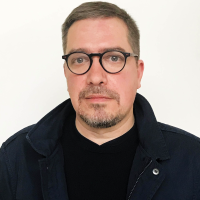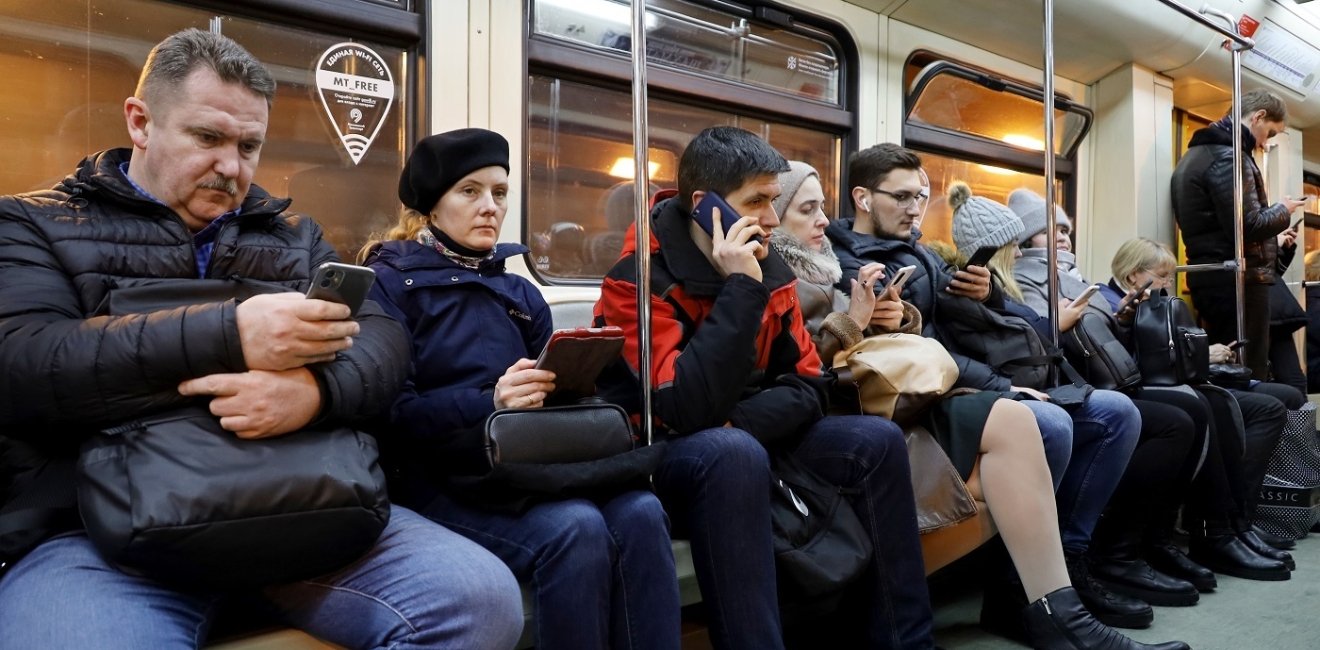
A blog of the Kennan Institute
Vladimir Putin’s announcement that Russia would suspend participation in the last remaining nuclear arms control pact with the United States was the strongest note in his otherwise uninspired state-of-the-nation address last Monday. He had no military victories to brag about or any positive news to report. So he went negative.
Revelation of a successful test of an intercontinental ballistic missile may have been planned as the speech’s capstone. However, the test, which took place during Joe Biden's visit to Ukraine, was unsuccessful, contributing to an already substantial list of failures. Yet Putin’s speech conveyed an important message, if one he did not spell out.
Through an array of new domestic policies, Putin made clear, without saying it in so many words, that the default scenario for this war is for it to become Russia’s indefinite political reality.
He did not describe the war’s purpose or share his idea of what a Russian victory would look like. Instead, he spoke in terms of the war as a “difficult situation” that had “developed.” He refused to own it, and, as is common by now, sought to shift responsibility to the West: “They are the ones who started this war, while we are using force to stop it.” The job of finishing something you did not start can be endless.
Civilians, Not the Military, Saved Putin
In the picture Putin created, Russia’s war is the linchpin effectively joining state and society. As is customary for Putin, he did not call a spade a spade. He did not declare martial law; he did not mention the mobilization of people and resources or the emergency nature of his power. He presented his murderous war as the country’s new normal, a form and a norm of life.
Indirectly, he recognized that he had reached a military stalemate, but he spent a good half hour describing the Russian economy’s success in overcoming the “difficulties.” Most observers agree that Putin’s numbers were doctored, starting with the unbelievable 2.1 percent decline in Russia’s GDP. The real number, according to various estimates, must be somewhere between 2.5 and 3.5 percent.
Still, Putin was right in saying that the economic doomsayers were wrong. In 2022, Moscow’s oil and gas revenues grew substantially. A large trade and current account surplus and the collapse of imports all colluded to ease pressure on the ruble. The central bank’s administrative power helped prevent a run on banks. In the end, the recession and a budget deficit proved manageable.
Essentially, Putin presented Russia’s federal budget as an inexhaustible source of funding for every one of Moscow’s projects. This is not true. Russia’s budgetary needs will be harder and harder to supply. This year, the West’s tardy sanctions on Russia’s crude and the G7’s price ceilings for Russia’s exports will finally start to bite. Moscow’s export revenues—providing 40 to 45 percent of the federal budget—will likely falter.
They have already started to. In January the budget deficit went up to 1.8 trillion rubles (around $25 billion), which is considerably larger than last January's deficit. The budget saw a 46 percent decrement in oil and gas revenues compared to January 2021. A similar drop was reported in December, the first month the sanctions against Russia’s seaborne crude went into effect.
It is too early to proclaim a financial catastrophe, however. The government attributed the January shortfall to a change in reporting methods. In December the Kremlin successfully mobilized its export resources to cover the loss. It will do so again.
It will take years for Russia’s budget to reach critical stress levels. As of February, Russia had $155 billion in its National Wealth Fund, or about 7 percent of GDP, which it can use to cover a few years’ worth of budget deficits.
Advertising the War As Opportunity
It is clear that Putin’s civilian officials have proved much more dependable than his top army brass and security apparatus. Thanks to Russia’s government and the top central bank officials (who were once seen as part of a potential antiwar faction), the Kremlin can feel relatively comfortable without achieving major victories on the battlefield.
Believing that Russia’s robust energy exports, its import schemes meant to defy sanctions, and a growing military-industrial complex will keep him securely in the Kremlin, Putin now presents his “special military operation” as a permanent reality. In Putin’s world, Russian society is well isolated from the losses and hardships of the war. The numbers of the dead and wounded are kept secret, and the mobilization effort is spread thinly over the immense country. In Putin’s vision, Russians do not pay for the war, they gain from it.
In his speech, Putin presented the war as an upward mobility mechanism that would allow war veterans to get decent civilian jobs and enhance their social status. War itself was cast as a reliable “job opportunity” too.
Among other new policies, Putin has called on his government to make sure that military personnel are guaranteed two-week vacations every six months. Patriotic commentators immediately saw this measure as a sign of a protracted war effort ahead. Putin’s soldiers should go to “work,” come home, rest, and leave again.
Those who have suffered from the war are promised special payments and care funded by a newly established sovereign fund. The Russian president has also decreed that funds from his maternity program, which rewards families to have more than one child, be made available to the residents of the Russia-occupied territories. Families whose first child was born in 2007 or later are eligible to receive the funds.
War is also an economic opportunity. Thanks to war and the new markets that sprang up with the war (some to fill the holes left by the exodus of foreign companies), it is possible to make money, the Kremlin proclaims. Indeed, it is necessary to do so. Businesses should invest in a country at war. The fact that Moscow is about to target private businesses with new taxes and possibly even levy citizens’ savings was not mentioned in the speech, but, in Putin’s PR-trained presentation anyway, the war inflicts no losses on the country.
Interestingly, Putin said nothing about a possible ban against leaving the country for those eligible for conscription, nor did he announce any repressive treatment (other than moral indignation) of those who had left. He did not announce any restrictions on the transfer of money abroad. Apparently, his priority is to make sure there is no antiwar protest inside the country. The main feature of his picture is “unity” within the country’s borders.
Putin’s project now is an attempt to deprive Russian society of any sources of well-being or moral guidance that are not related to the war. The first step to this end is to foster, especially through the media, a population insensitive to loss as a result of the war’s (mandated) invisibility. The second step is to create a significant layer in society of people who benefit from the war. This will create a “people's state,” built around the war. How far Putin decides to go in this direction depends only on the time allotted him by history.
The opinions expressed in this article are those solely of the author and do not reflect the views of the Kennan Institute.
Author

Editor-at-Large, Meduza

Kennan Institute
After more than 50 years as a vital part of the Wilson Center legacy, the Kennan Institute has become an independent think tank. You can find the current website for the Kennan Institute at kennaninstitute.org. Please look for future announcements about partnership activities between the Wilson Center and the Kennan Institute at Wilson Center Press Room. The Kennan Institute is the premier US center for advanced research on Eurasia and the oldest and largest regional program at the Woodrow Wilson International Center for Scholars. The Kennan Institute is committed to improving American understanding of Russia, Ukraine, Central Asia, the South Caucasus, and the surrounding region through research and exchange. Read more

Explore More in The Russia File
Browse The Russia File
Chechnya as a Model of Modern Russia

Russia’s Indigenous Communities and the War in Ukraine

Gas and Power in a Changing US–Russia Relationship

